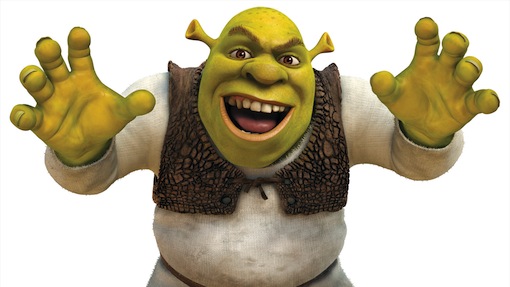Students often communicate like ogres.
If people would always simply say what they really mean or feel, inter-personal communication would be a whole lot easier. We all know that’s not the case however. People, maybe especially young people, can communicate like ogres. Often, we have to listen for clues that they’re communicating more than what they’re saying. We have to take the time to dig through their hostile appearance to see what’s wrong.

Ogre comparisons
Take this hilarious scene from the movie Shrek for instance, where ogre Shrek is trying to communicate to his friend-against-better-judgment Donkey that there’s more to ogres than meets the eye:
Shrek: For your information, there’s a lot more to ogres than people think.
Donkey: Example?
Shrek: Example…uh…ogres are like onions!
Donkey: They stink?
Shrek: Yes… No!
Donkey: Oh, they make you cry?
Shrek: No!
Donkey: Oh, you leave ’em out in the sun, they get all brown, start sproutin’ little white hairs…
Shrek: [peels an onion] NO! Layers. Onions have layers. Ogres have layers. Onions have layers. You get it? We both have layers.
[walks off]
Donkey: Oh, you both have LAYERS. Oh. You know, not everybody like onions. What about cake? Everybody loves cake!
Shrek: I don’t care what everyone else likes! Ogres are not like cakes.
Donkey: You know what ELSE everybody likes? Parfaits! Have you ever met a person, you say, `Let’s get some parfait,’ they say, `Hell no, I don’t like no parfait’? Parfaits are delicious!
Shrek: NO! You dense, irritating, miniature beast of burden! Ogres are like onions! End of story! Bye-bye! See ya later.
In my experiences, conversations with teens can be like that. They’ll try and explain something by using comparisons or terms or even cultural references we don’t understand at once. We can try to impose our analogies on them like Donkey did, but a better way is to keep asking, keep talking till we do understand what they are trying to say.
Ogre anger
For most of the Shrek movie (at least the first one), the Ogre is angry. He’s irritated by his invasion of privacy, he’s angry because he’s more or less forced to do stuff he doesn’t want to do, he’s frustrated because of his feelings for Fiona, and the incessant talking of Donkey is driving him crazy.
Sound familiar?
I’ve encountered many teens who were angry and frustrated. There is often so much happening in their lives and a lot of it is outside their control. The changes in their bodies and brains, relationships that change, parents who either can’t let go or offer nu guidance at all, pressure from peers and school and sports.
Let’s be patient with their anger and frustration and listen for clues they give in their communication about what’s bugging them. They may seem to be angry at the world for nothing, but nine out of ten times something really is bothering them and they are giving clues to what that is. Often these clues will have to do with emotions and feelings, so that’s something to pay attention to in conversations. In my experience, these are often worded as an understatement (`I wasn’t happy when my brother moved out’) or as a denial (‘My brother moved out, no big deal’).
Ogre close guardedness
Even though he’s angry all the time, Ogre keeps his real thoughts and emotions close to his heart. In that sense, his statement that Ogres are like onions and have layers is very true. He only lets you see the outside and it takes time, patience and a lot of persistance to see the deeper layers. It takes trust, loving trust.
It’s the same with students Young people are like onions too, they have many layers. Some will open up instantly, girls are often more open than guys for instance. But some will only show the outside layers and keep the rest carefully hidden. It will take trust for you to be able to see the deeper layers. Don’t give up and don’t except the outer layer as a reality.
There’s more to Ogres than meets the eye…and the same is true for young people.
Can you think of examples where young people communicated like Ogres? What was needed to break through that layer and connect from heart to heart?
P.S. If you want to learn how to connect better with teens through conversations, check out my book Beyond Small Talk: Connecting With Teenagers Through Conversations That Matter. You’ll find many practical tips to engage teens in deeper conversations that have the ability to impact their lives.
Leave A Comment